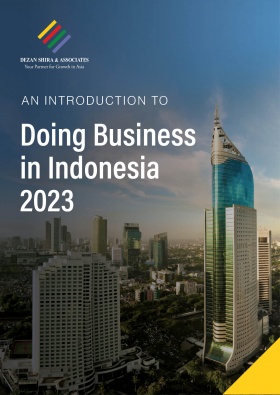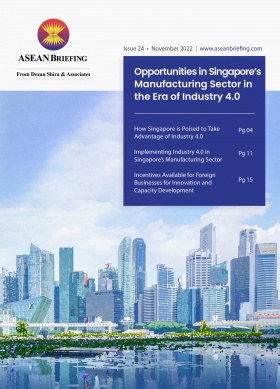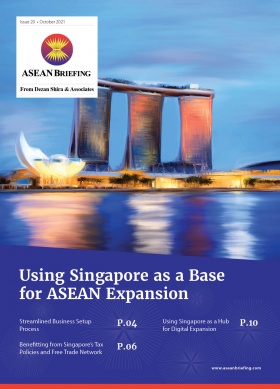Transfer Pricing in Singapore: A Guide for Foreign Investors
Singapore has developed a comprehensive system for transfer pricing to prevent the abuse of intracompany transactions by companies in the city-state.
The Singapore government has developed a comprehensive system for transfer pricing to prevent the abuse of intracompany transactions by companies in the city-state. Being a regional hub for multinational companies, the country’s transfer pricing regulations ensure that relevant parties do not underpay taxes and as well as prevent the distortion of taxable income.
What is transfer pricing?
Transfer pricing applies to companies that transact between companies from the same group, such as a subsidiary, or other ‘related’ parties. The persons or entities are related if:
- One party has direct or indirect control of the other (e.g. head offices or branch offices); or
- Both parties are under the control of the same persons or entity (e.g. several subsidiaries being owned by the same parent company).
Such conditions can give rise to preferential pricing between the parties, which could lead to the hiding of profits and underpaying taxes. The key principle to transfer pricing is that although these parties are related, they should interact as if they were independent business partners.
The arm’s length principle
The Inland Revenue of Singapore (IRAS) endorses the arm’s length principle as its standard guide to transfer pricing. Under this principle, profits should be taxed where the real economic activities have occurred and where profits are generated.
The principle requires that transfer prices between related parties are equivalent to prices that unrelated parties would have charged under the same circumstances. This involves identifying situations where transactions between unrelated parties, are comparable to the transactions being undertaken between related parties. This is known as comparability analysis.
There is a three-step approach to applying the arm’s length principle:
- Conduct the comparability analysis;
- Identify the most appropriate transfer pricing method; and
- Determine the arm’s length analysis.
Step 1 – Conduct a comparability analysis
The comparability analysis provides a comprehensive assessment of the significant similarities and differences between taxpayers (or transactions) and benchmarked entities (or transactions).
The transaction must be equivalent to a transaction between independent parties. The relevant aspects include:
- Contractual terms of the transaction;
- Characteristics of the goods, services, or intangible properties;
- Functional analysis on Functions performed, Assets used, and Risks assumed (“FAR”); and
- Commercial and economic circumstances.
Other additional aspects:
- Evaluating transactions on a separate or aggregate basis;
- Using multiple-year data; and
- Considering losses.
Step 2 – Identifying the most appropriate transfer pricing method
IRAS uses five internationally accepted methods to evaluate transfer prices of enterprises, based on those applied by independent parties in similar transactions, including:
- Comparable Uncontrolled Price (CUP) Method
The CUP method compares the prices of assets and services transferred in the transaction with the related party and the price in an independent party transaction, where the circumstances are comparable.
- Resale Price Method (RPM)
This method evaluates the resale price by comparing it with the selling and operating costs of the reseller.
- Cost Plus Method (CPM)
This method compares the cost of production and the gross difference in related and unrelated transactions. The selling price of a product must not only cover production costs but also create additional profits for the company.
- Profit Split Method (PSM)
This method compares how stakeholders divide a transaction’s profit and loss depending on their relative contributions.
- Transactional Net Margin Method (TNMM)
The TNMM compares the net profit relative to an appropriate base (such as costs, sales, or assets) attained by a taxpayer from a related party transaction to that of comparable independent parties.
Step 3 – Determine the arm’s length results
The arm’s length result is obtained by applying the appropriate transfer pricing method to the data of independent party transactions.
Transfer pricing documentation (TPD)
Singapore formally introduced TP rules from Year of Assessment (YA) 2019, requiring taxpayers to prepare contemporaneous TDP. The TPD is needed to analyze whether related party transactions are conducted at the arm’s length principle.
Thus, taxpayers must comply with the arm’s length principle when transacting with their related parties and maintain proper transfer pricing documentation to substantiate their pricing.
Scope
A company is required to prepare and maintain TPD once meeting the following conditions:
- Total turnover derived from its trade or business is more than S$10 million (US$7.4 million) for the previous basis period; and
- TPD has been specifically requested for any prior establishments.
TPD Requirements
- Enterprises should keep relevant documents of an overview of the business activities in Singapore;
- The details are prescribed in the TP Documentation Rules;
- TPD must be prepared no later than the filing due date of the tax return and submitted within 30 days from a request by IRAS;
- TPD must be retained for at least five years; and
- The penalty for non-compliance is up to S$10,000 (US$7,400).
Exemptions
If any of the following scenarios apply, taxpayers can refrain from preparing TPD for those transactions:
- If the taxpayer’s gross revenue is not more than S$10 million (US$7.4 million);
- Related party loans where an indicative margin is applied;
- Routine support services where a five percent cost markup is applied;
- Related party domestic loan; or
- Related party transactions are covered by an Advance Pricing Arrangement (APA).
About Us
ASEAN Briefing is produced by Dezan Shira & Associates. The firm assists foreign investors throughout Asia and maintains offices throughout ASEAN, including in Singapore, Hanoi, Ho Chi Minh City, and Da Nang in Vietnam, in addition to Jakarta, in Indonesia. We also have partner firms in Malaysia, the Philippines, and Thailand as well as our practices in China and India. Please contact us at asean@dezshira.com or visit our website at www.dezshira.com.
- Previous Article A Guide to Singapore’s Labor Law
- Next Article Audit and Compliance in Singapore: A Guide for Foreign Investors







